 Search by Keyword
|
“I WANNA BE YOUR MAN”
(John Lennon / Paul McCartney)
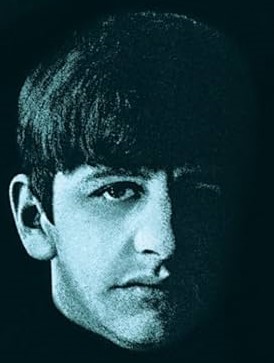 By late 1963, the role of Ringo Starr within The Beatles was becoming increasingly important. In the Cavern / Hamburg days of 1962 and earlier, a solo vocal spot was secured for Ringo (as with Pete Best earlier) to provide a performance spotlight on each member of the band. As fame increased in early 1963, The Beatles’ national tours required a much more abbreviated set list, so Ringo’s vocal spotlight “Boys” was usually omitted. By late 1963, the role of Ringo Starr within The Beatles was becoming increasingly important. In the Cavern / Hamburg days of 1962 and earlier, a solo vocal spot was secured for Ringo (as with Pete Best earlier) to provide a performance spotlight on each member of the band. As fame increased in early 1963, The Beatles’ national tours required a much more abbreviated set list, so Ringo’s vocal spotlight “Boys” was usually omitted.
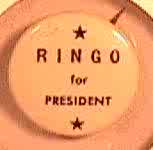 However, as their legion of fans grew larger and larger throughout the year, lots continued to be cast among Britain’s youth as to which was each one’s “favorite Beatle.” Ringo’s popularity continued to increase to the point where chants of “Ring-o! Ring-o!” were being heard at their performances. In order to satisfy public demand, it was decided to once again include a vocal spotlight for Ringo in their performances. However, as their legion of fans grew larger and larger throughout the year, lots continued to be cast among Britain’s youth as to which was each one’s “favorite Beatle.” Ringo’s popularity continued to increase to the point where chants of “Ring-o! Ring-o!” were being heard at their performances. In order to satisfy public demand, it was decided to once again include a vocal spotlight for Ringo in their performances.
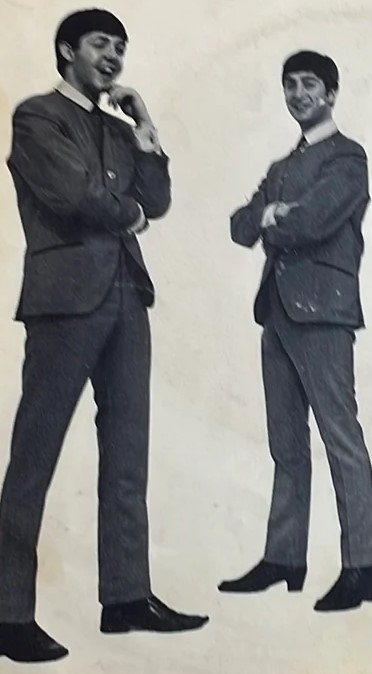 It also became obvious that another song needed to be added to their drummer’s repertoire. It was decided by John and Paul that they would compose a new song particularly for their drummer to sing. After presenting the newly written song “Little Child” for Ringo’s approval, and him thereby rejecting it, the duo set out to write something more suited to what he would be capable of performing live. It also became obvious that another song needed to be added to their drummer’s repertoire. It was decided by John and Paul that they would compose a new song particularly for their drummer to sing. After presenting the newly written song “Little Child” for Ringo’s approval, and him thereby rejecting it, the duo set out to write something more suited to what he would be capable of performing live.
Songwriting History
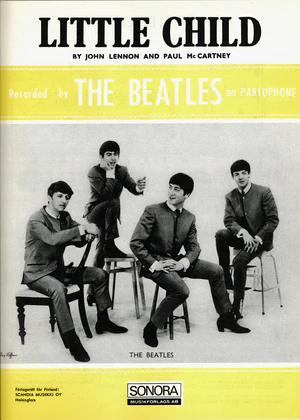 The origins of the song began when, as witnessed by Ron King who was the driver for The Beatles during their British touring schedule, John Lennon jotted down the phrase “I Wanna Be Your Man” as a song title idea as read in a newspaper. Lennon was prone to keep a list of ideas such as this for possible inclusion as lines or titles of future songs. At some point, McCartney must have been clued in to this idea because he was the one to begin writing a song around this phrase with the intention of giving it to Ringo to sing. This must have taken place in September 1963 since “Little Child,” also written early this month, had already been rejected by Ringo. The origins of the song began when, as witnessed by Ron King who was the driver for The Beatles during their British touring schedule, John Lennon jotted down the phrase “I Wanna Be Your Man” as a song title idea as read in a newspaper. Lennon was prone to keep a list of ideas such as this for possible inclusion as lines or titles of future songs. At some point, McCartney must have been clued in to this idea because he was the one to begin writing a song around this phrase with the intention of giving it to Ringo to sing. This must have taken place in September 1963 since “Little Child,” also written early this month, had already been rejected by Ringo.
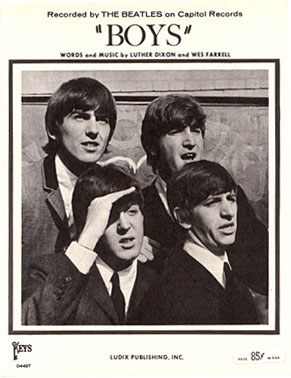 Although there are a few variations to the story from this point, our best bet is to defer to McCartney’s first-hand recollection of the story. Regarding his intent for the song, Paul states in his book "Many Years From Now," “We often used to say to people, 'the words don't really mantter, people don't listen to the words, it's the sound they listen to.' 'I Wanna Be Your Man' was to try and give Ringo something like ‘Boys’; an uptempo song he could sing from the drums. So again it had to be very simple.” Using “Boys” as a pattern, Paul came up with verses but abandoned it after having difficulty coming up with a bridge or chorus to go with it. Nonetheless, it had already been decided that this was the song Ringo was to sing. Although there are a few variations to the story from this point, our best bet is to defer to McCartney’s first-hand recollection of the story. Regarding his intent for the song, Paul states in his book "Many Years From Now," “We often used to say to people, 'the words don't really mantter, people don't listen to the words, it's the sound they listen to.' 'I Wanna Be Your Man' was to try and give Ringo something like ‘Boys’; an uptempo song he could sing from the drums. So again it had to be very simple.” Using “Boys” as a pattern, Paul came up with verses but abandoned it after having difficulty coming up with a bridge or chorus to go with it. Nonetheless, it had already been decided that this was the song Ringo was to sing.
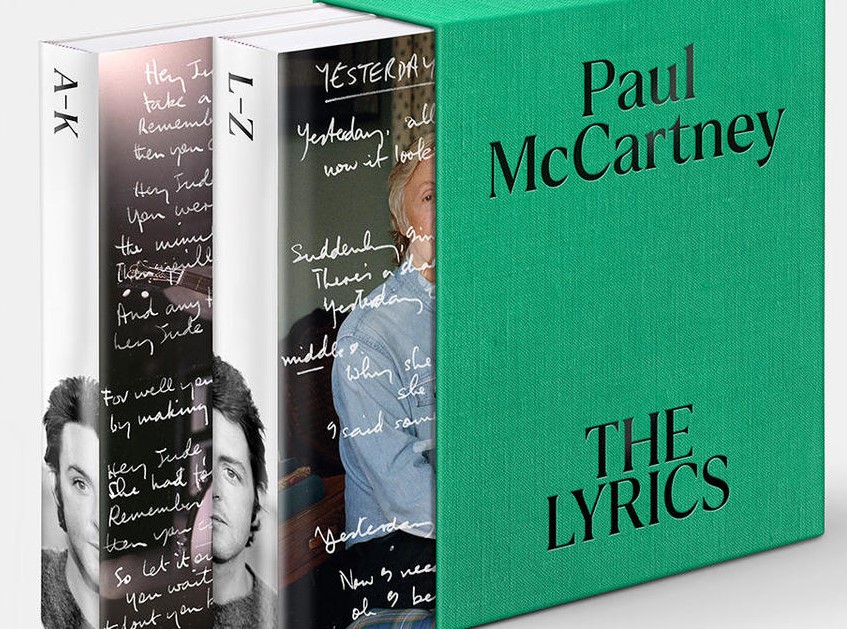 Here is where a chance meeting resulted in the song being completed just before The Beatles brought it into recording studio. In his 2021 book "The Lyrics," Paul relates the events that occurred on September 10th, 1963: "One day, around the time we moved down to London from Liverpool in the (late) summer of 1963, John and I were in Charing Cross Road, which was guitar central. We would get a taxi and go down there, just to look at the guitars. The whole place in the early '60s was guitar shops, and we'd just go there and gaze longingly all afternoon at guitars we could not afford." Here is where a chance meeting resulted in the song being completed just before The Beatles brought it into recording studio. In his 2021 book "The Lyrics," Paul relates the events that occurred on September 10th, 1963: "One day, around the time we moved down to London from Liverpool in the (late) summer of 1963, John and I were in Charing Cross Road, which was guitar central. We would get a taxi and go down there, just to look at the guitars. The whole place in the early '60s was guitar shops, and we'd just go there and gaze longingly all afternoon at guitars we could not afford."
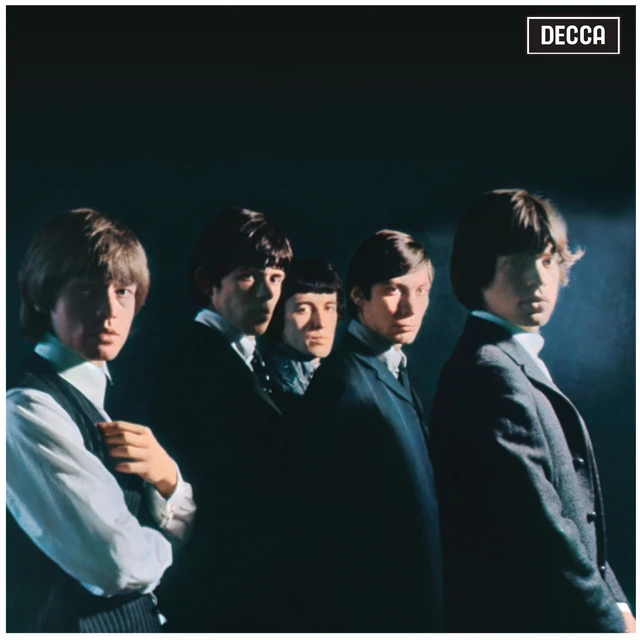 "We were looking at the guitars one day when a black London cab went by and we noticed Mick Jagger and Keith Richards in it. So we yelled, 'Hey!' They saw us waving, so they pulled over. We ran up and said, 'Hey, give us a lift.' 'Yeah, alright. Where are you going?' 'We're going to north London.' So, we were just chatting in the car about what we were doing. 'Oh, we've got a recording contract,' Mick told us...'The only trouble is, we haven't got a new single.' They asked us if we had any songs, and I said, 'Well, there's a song...I think it would work great for you guys.'" In 2016, Paul related: "We were friends with them, and I just thought 'I Wanna Be Your Man' would be good for them. I knew they did Bo Didley stuff. And they made a good job of it." "We were looking at the guitars one day when a black London cab went by and we noticed Mick Jagger and Keith Richards in it. So we yelled, 'Hey!' They saw us waving, so they pulled over. We ran up and said, 'Hey, give us a lift.' 'Yeah, alright. Where are you going?' 'We're going to north London.' So, we were just chatting in the car about what we were doing. 'Oh, we've got a recording contract,' Mick told us...'The only trouble is, we haven't got a new single.' They asked us if we had any songs, and I said, 'Well, there's a song...I think it would work great for you guys.'" In 2016, Paul related: "We were friends with them, and I just thought 'I Wanna Be Your Man' would be good for them. I knew they did Bo Didley stuff. And they made a good job of it."
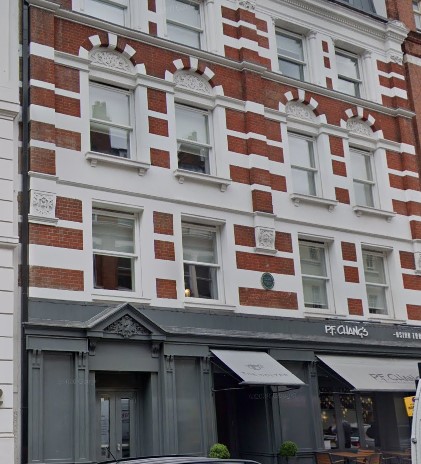 Lennon and McCartney were then invited to come with them to a club called Studio 51 in Great Newport Street in London where The Rolling Stones were rehearsing. It was clear that their manager Andrew Oldham was anxious to find material for his clients to record and there was pressure from Decca Records to release a second single. "We knew (The Beatles) by then and we were rehearsing," Mick Jagger explained in 1968, "and Andrew (Oldham) brought Paul and John down to the rehearsal. They said they had this tune, they were really hustlers then. I mean, the way they used to hustle tunes was great. 'Hey Mick, we've got this great song.' So they played it and we thought it sounded pretty commercial, which is what we were looking for, so we did it like Elmore James or something." They agreed to use it, but they needed a finished song. Lennon and McCartney were then invited to come with them to a club called Studio 51 in Great Newport Street in London where The Rolling Stones were rehearsing. It was clear that their manager Andrew Oldham was anxious to find material for his clients to record and there was pressure from Decca Records to release a second single. "We knew (The Beatles) by then and we were rehearsing," Mick Jagger explained in 1968, "and Andrew (Oldham) brought Paul and John down to the rehearsal. They said they had this tune, they were really hustlers then. I mean, the way they used to hustle tunes was great. 'Hey Mick, we've got this great song.' So they played it and we thought it sounded pretty commercial, which is what we were looking for, so we did it like Elmore James or something." They agreed to use it, but they needed a finished song.
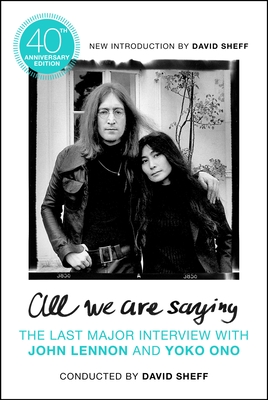 Reportedly, John then stated, “Listen, if you guys really like the main part of the song, we’ll finish it for you right now.” As related in David Sheff's book "All We Are Saying," Lennon's account from 1980 states: "I think we finished it off for The Stones...They needed a song and we went to see them to see what kind of stuff they did. Mick and Keith had heard that we had an unfinished song - Paul just had this bit...'I wanna be your lover, baby, I wanna be your man'...and we needed another verse or something. We sort of played it roughly to them and they said, 'Yeah, OK, that's our style.' So Paul and I just went off in the corner of the room and finished the song off while they were all still there talking. We came back and that's how Mick and Keith got inspired to write, because, 'Jesus, look at that. They just went in the corner and wrote it and came back!' Right in front of their eyes we did it." It was at that moment that John added the chorus with only the title of the song being repeated four times as the lyrics. This corresponds with what Lennon at one point said regarding the song, “Both of us wrote it but mainly Paul…I helped him finish it.” Reportedly, John then stated, “Listen, if you guys really like the main part of the song, we’ll finish it for you right now.” As related in David Sheff's book "All We Are Saying," Lennon's account from 1980 states: "I think we finished it off for The Stones...They needed a song and we went to see them to see what kind of stuff they did. Mick and Keith had heard that we had an unfinished song - Paul just had this bit...'I wanna be your lover, baby, I wanna be your man'...and we needed another verse or something. We sort of played it roughly to them and they said, 'Yeah, OK, that's our style.' So Paul and I just went off in the corner of the room and finished the song off while they were all still there talking. We came back and that's how Mick and Keith got inspired to write, because, 'Jesus, look at that. They just went in the corner and wrote it and came back!' Right in front of their eyes we did it." It was at that moment that John added the chorus with only the title of the song being repeated four times as the lyrics. This corresponds with what Lennon at one point said regarding the song, “Both of us wrote it but mainly Paul…I helped him finish it.”
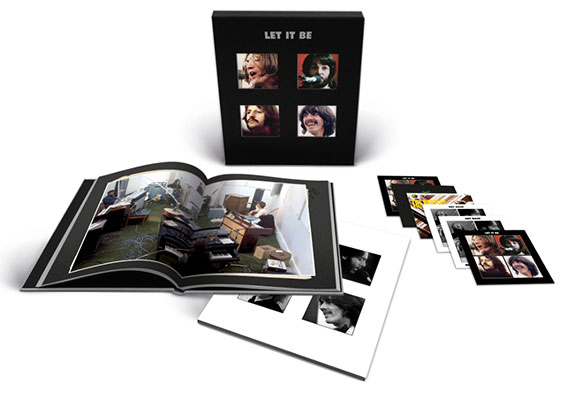 "John and Paul came down to rehearsal and laid the song on us," clarifies Keith Richard of the Rolling Stones. "We just heard John and Paul on a piano banging it out. We picked it up and it was just one of those jams. They got enthusiastic, we got enthusiastic and said, 'Right. We'll cut it tomorrow,' and that was it." Bassist Bill Wyman adds: "We kind of learned it pretty quickly 'cause there wasn't much to learn. Then Brian (Jones) got his slide out, his steel (guitar) out and dadaw...dadaw...and we said, 'yeah, that's better, dirty it up a bit and bash it out,' and we kind of completely turned the song around and made it much more tough, Stones- and Elmore James- like." Mick Jagger adds: "Nobody really produced it. It was completely crackers, but it was a hit and sounded great on stage." Author Kevin Howlett, as detailed in his "Track By Track" section of the book contained in the 2021 Anniversary edition of the "Let It Be" album, writes that "John revealed at Apple that, in late 1963, he had offered 'One After 909' to The Rolling Stones, who opted instead to record Lennon / McCartney's 'I Wanna Be Your Man' for their second single." "John and Paul came down to rehearsal and laid the song on us," clarifies Keith Richard of the Rolling Stones. "We just heard John and Paul on a piano banging it out. We picked it up and it was just one of those jams. They got enthusiastic, we got enthusiastic and said, 'Right. We'll cut it tomorrow,' and that was it." Bassist Bill Wyman adds: "We kind of learned it pretty quickly 'cause there wasn't much to learn. Then Brian (Jones) got his slide out, his steel (guitar) out and dadaw...dadaw...and we said, 'yeah, that's better, dirty it up a bit and bash it out,' and we kind of completely turned the song around and made it much more tough, Stones- and Elmore James- like." Mick Jagger adds: "Nobody really produced it. It was completely crackers, but it was a hit and sounded great on stage." Author Kevin Howlett, as detailed in his "Track By Track" section of the book contained in the 2021 Anniversary edition of the "Let It Be" album, writes that "John revealed at Apple that, in late 1963, he had offered 'One After 909' to The Rolling Stones, who opted instead to record Lennon / McCartney's 'I Wanna Be Your Man' for their second single."
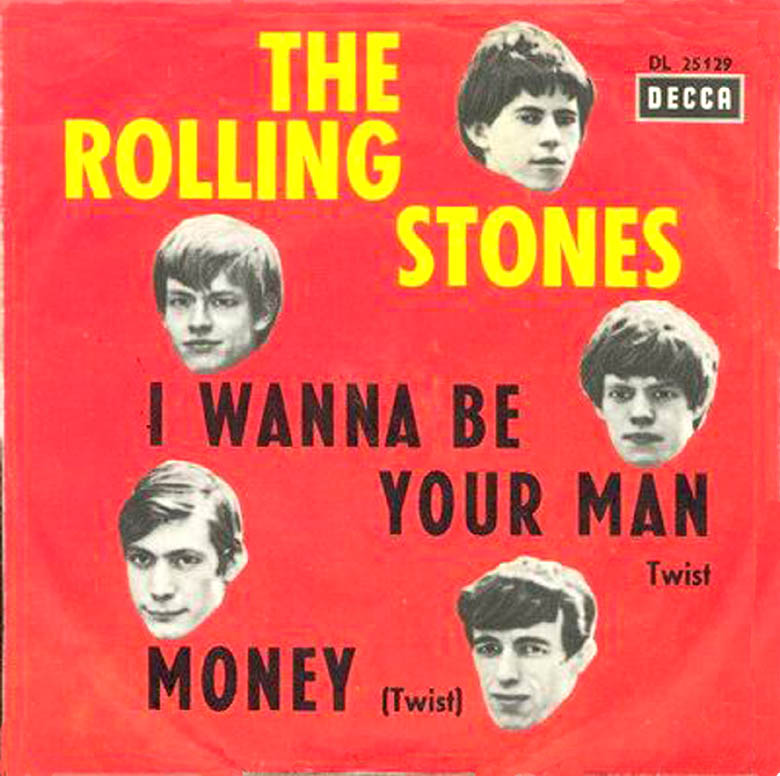 As history testifies, The Rolling Stones did record the song on October 7th, 1963, becoming their first big British hit, peaking at #12 in the UK (missing the Top 40 in the US). Their version of "I Wanna Be Your Man" also became the first song ever to be performed on the BBC television show "Top Of The Pops" on January 1st, 1964, a small portion of this performance being featured in the 1995 "Beatles Anthology" TV documentary. However, history also shows that The Beatles still decided to record the song themselves as a vocal highlight for Ringo on their second British album "With The Beatles." The day after their chance meeting with Mick Jagger and Keith Richards and their offering the song to The Rolling Stones on September 10th, 1963, The Beatles entered EMI recording studios on September 11th, 1963, to begin recording it themselves. As history testifies, The Rolling Stones did record the song on October 7th, 1963, becoming their first big British hit, peaking at #12 in the UK (missing the Top 40 in the US). Their version of "I Wanna Be Your Man" also became the first song ever to be performed on the BBC television show "Top Of The Pops" on January 1st, 1964, a small portion of this performance being featured in the 1995 "Beatles Anthology" TV documentary. However, history also shows that The Beatles still decided to record the song themselves as a vocal highlight for Ringo on their second British album "With The Beatles." The day after their chance meeting with Mick Jagger and Keith Richards and their offering the song to The Rolling Stones on September 10th, 1963, The Beatles entered EMI recording studios on September 11th, 1963, to begin recording it themselves.
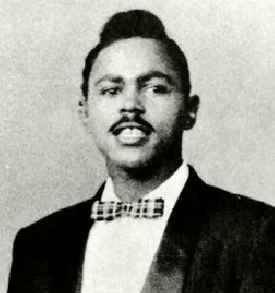 As to the inspiration for the song, other than trying to mimic The Shirelles song “Boys,” McCartney describes the song as “a Bo Diddley kind of thing,” but also credits the song “Fortune Teller” by Benny Spellman for the last phrase in the chorus “I wanna be your ma-an” with the downturned final note. The style of the song can also be credited to a favorite of The Beatles, “Some Other Guy,” originally recorded by Richie Barrett and included in The Beatles set lists well into their national tours of 1963. This song included the downturned final note as well. As to the inspiration for the song, other than trying to mimic The Shirelles song “Boys,” McCartney describes the song as “a Bo Diddley kind of thing,” but also credits the song “Fortune Teller” by Benny Spellman for the last phrase in the chorus “I wanna be your ma-an” with the downturned final note. The style of the song can also be credited to a favorite of The Beatles, “Some Other Guy,” originally recorded by Richie Barrett and included in The Beatles set lists well into their national tours of 1963. This song included the downturned final note as well.
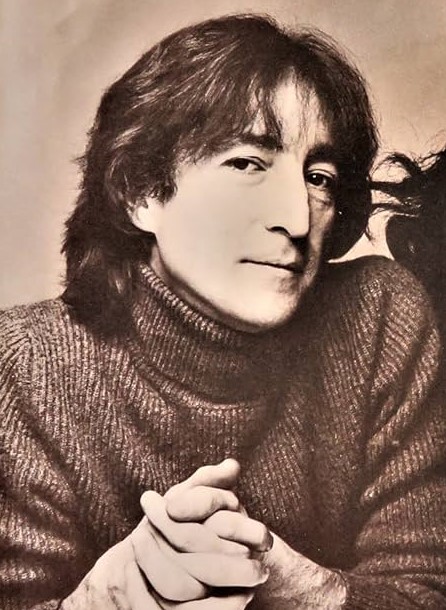 Indicating what he thought about "I Wanna Be Your Man," John stated in 1980, as documented in David Sheff's book "All We Are Saying," that the song “was a kind of lick Paul had…it was a throwaway. The only two versions of the song were Ringo and The Rolling Stones. That shows how much importance we put on it. We weren’t going to give them anything great, right?” Indicating what he thought about "I Wanna Be Your Man," John stated in 1980, as documented in David Sheff's book "All We Are Saying," that the song “was a kind of lick Paul had…it was a throwaway. The only two versions of the song were Ringo and The Rolling Stones. That shows how much importance we put on it. We weren’t going to give them anything great, right?”
Recording History
 For such a simple song, The Beatles had quite a difficult time recording it, probably due to the song being just recently composed and the group not being exactly sure what kind of arrangement would suit it. On September 11th, 1963, the day after they finished writing it in front of The Rolling Stones, they attempted to record it in EMI Studio Two at 2:30 pm. After one take, it was decided to leave it for another day. For such a simple song, The Beatles had quite a difficult time recording it, probably due to the song being just recently composed and the group not being exactly sure what kind of arrangement would suit it. On September 11th, 1963, the day after they finished writing it in front of The Rolling Stones, they attempted to record it in EMI Studio Two at 2:30 pm. After one take, it was decided to leave it for another day.
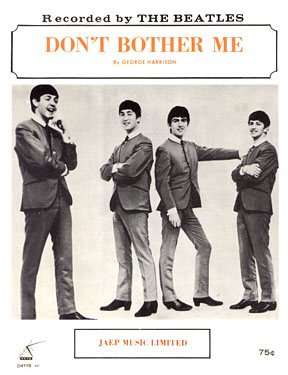 The next day, September 12th, 1963, they returned to the song during the evening session, which ran from 7 to 11:30 pm. After working extensively on “Don’t Bother Me” and “Little Child,” The Beatles returned to “I Wanna Be Your Man” at approximately 10:45 pm for six more takes, numbered two through seven. The Beatles played their usual instruments while Ringo sang his lead vocal live on these takes. "Take seven" was considered the best at this point, this being a composite of two takes edited together just before the final verse, and they called it a night, although much more work would be needed on this track. The next day, September 12th, 1963, they returned to the song during the evening session, which ran from 7 to 11:30 pm. After working extensively on “Don’t Bother Me” and “Little Child,” The Beatles returned to “I Wanna Be Your Man” at approximately 10:45 pm for six more takes, numbered two through seven. The Beatles played their usual instruments while Ringo sang his lead vocal live on these takes. "Take seven" was considered the best at this point, this being a composite of two takes edited together just before the final verse, and they called it a night, although much more work would be needed on this track.
 Two and a half weeks later, on September 30th, 1963, another recording session took place which included "I Wanna Be Your Man," although The Beatles were not involved. While they were out of the country, George Martin took it upon himself to overdub a Hammond organ onto the song. Beginning approximately at 8:30 am, with the original two-track tape being re-recorded onto another two-track machine, George Martin made six attempts at recording this overdub simultaneously onto "take seven" from September 12th, 1963, and the last attempt was deemed best, which took the song to "take 13." Interestingly, the liner notes from the British "With The Beatles" album state that John Lennon played the Hammond Organ, but official documentation confirms otherwise. Two and a half weeks later, on September 30th, 1963, another recording session took place which included "I Wanna Be Your Man," although The Beatles were not involved. While they were out of the country, George Martin took it upon himself to overdub a Hammond organ onto the song. Beginning approximately at 8:30 am, with the original two-track tape being re-recorded onto another two-track machine, George Martin made six attempts at recording this overdub simultaneously onto "take seven" from September 12th, 1963, and the last attempt was deemed best, which took the song to "take 13." Interestingly, the liner notes from the British "With The Beatles" album state that John Lennon played the Hammond Organ, but official documentation confirms otherwise.
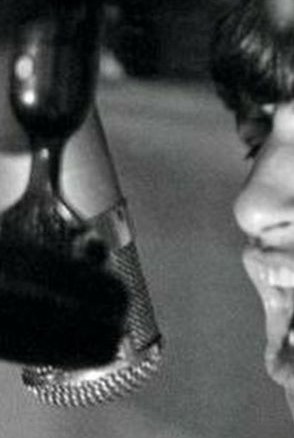 Three days later, on October 3rd, 1963, The Beatles (minus George Harrison) reassembled in Studio Two of EMI for more work on the song. This three hour session took place from 10 am to 1 pm and started with Ringo double-tracking his vocal and adding maracas to the song simultaneous to the two-track tape of "take 13" being re-recorded once again onto another two-track machine. Two attempts of this overdub now brought the song to "take 15." Three days later, on October 3rd, 1963, The Beatles (minus George Harrison) reassembled in Studio Two of EMI for more work on the song. This three hour session took place from 10 am to 1 pm and started with Ringo double-tracking his vocal and adding maracas to the song simultaneous to the two-track tape of "take 13" being re-recorded once again onto another two-track machine. Two attempts of this overdub now brought the song to "take 15."
 With the deadline for completing their second British album perilously close, The Beatles all convened once again in Studio Two of EMI on October 23rd, 1963 for their final contribution to the album, which was a tambourine overdub by Ringo for “I Wanna Be Your Man.” This last overdub was recorded at the beginning of this session by the same process of once again re-recording the two-track tape onto another two-track machine while Ringo performed the new tambourine overdub, this being accomplished between 10 am and 1 pm. After this was done, The Beatles observed George Martin and Norman Smith preparing a mono mix with a final fade-out of the song, as well for “Little Child” and “Hold Me Tight.” These were the final mono mixes for the album as released on the British "With The Beatles" album. The stereo mix with fade-out for “I Wanna Be Your Man,” as well as for the rest of the album, was performed on October 29th by George Martin, Norman Smith, Geoff Emerick and the mysterious B.T. With the deadline for completing their second British album perilously close, The Beatles all convened once again in Studio Two of EMI on October 23rd, 1963 for their final contribution to the album, which was a tambourine overdub by Ringo for “I Wanna Be Your Man.” This last overdub was recorded at the beginning of this session by the same process of once again re-recording the two-track tape onto another two-track machine while Ringo performed the new tambourine overdub, this being accomplished between 10 am and 1 pm. After this was done, The Beatles observed George Martin and Norman Smith preparing a mono mix with a final fade-out of the song, as well for “Little Child” and “Hold Me Tight.” These were the final mono mixes for the album as released on the British "With The Beatles" album. The stereo mix with fade-out for “I Wanna Be Your Man,” as well as for the rest of the album, was performed on October 29th by George Martin, Norman Smith, Geoff Emerick and the mysterious B.T.
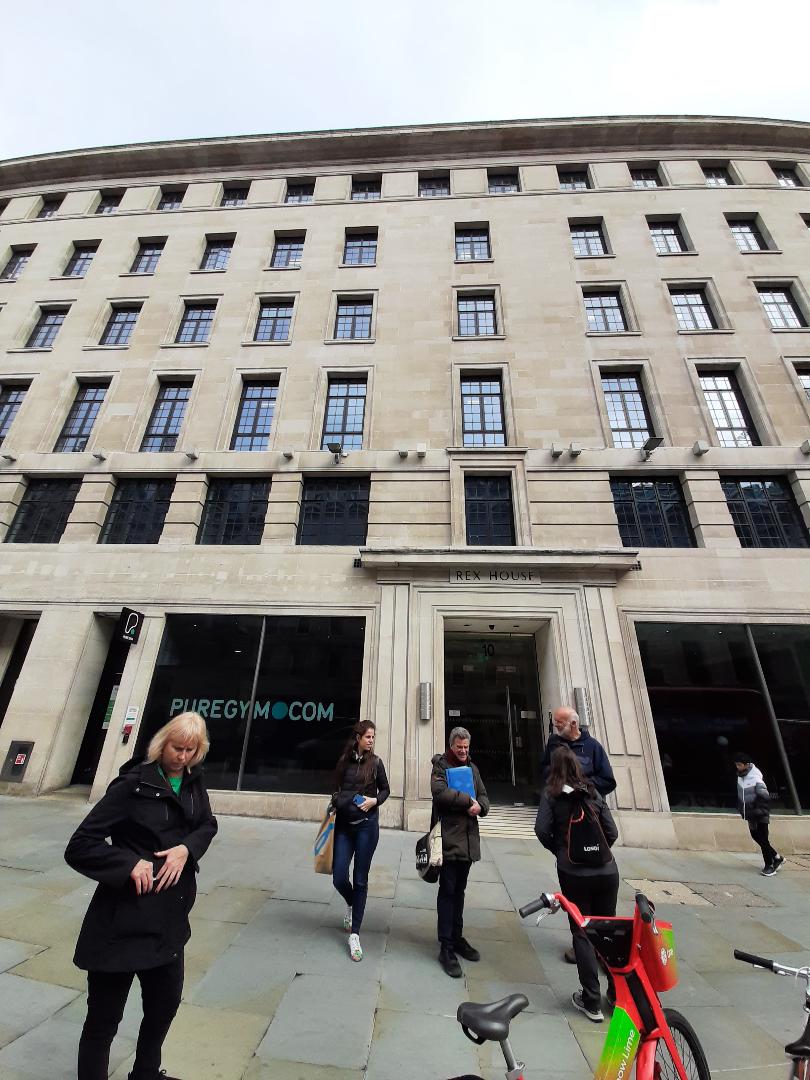 Their first of two BBC radio recordings of the song was on January 7th, 1964 at The Playhouse Theatre in London between 2:30 and 4 pm for the popular show “Saturday Club,” which was produced by Jimmy Grant and Bernie Andrews and broadcast on February 15th between 10 am and 12 noon. The second was on February 28th, 1964 in Studio One of BBC Piccadilly Studios in London between 6:30 and 9 pm, which was produced by Bryant Marriott for the second edition of their radio show “From Us To You” that aired on March 30th of that year between 10 am and 12 noon. This is the version that was officially released on the “Live At The BBC” album. Their first of two BBC radio recordings of the song was on January 7th, 1964 at The Playhouse Theatre in London between 2:30 and 4 pm for the popular show “Saturday Club,” which was produced by Jimmy Grant and Bernie Andrews and broadcast on February 15th between 10 am and 12 noon. The second was on February 28th, 1964 in Studio One of BBC Piccadilly Studios in London between 6:30 and 9 pm, which was produced by Bryant Marriott for the second edition of their radio show “From Us To You” that aired on March 30th of that year between 10 am and 12 noon. This is the version that was officially released on the “Live At The BBC” album.
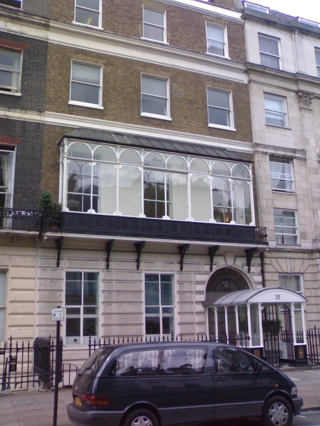 The Beatles had another recording session for “I Wanna Be Your Man” on April 19th, 1964 to provide a pre-recorded soundtrack for the British television special “Around The Beatles,” which was broadcast on the BBC on May 6th and June 8th, 1964. The Beatles lip-synced this song before a studio audience for the broadcast. This session, which was recorded on a three-track tape, took place at London's IBC Studios, Jack Good being the producer, Terry Johnson engineering and Glyn Johns as second engineer and tape operator. Glyn Johns was to eventually become the producer/engineer for the group's “Let It Be” album, released in 1970. The Beatles had another recording session for “I Wanna Be Your Man” on April 19th, 1964 to provide a pre-recorded soundtrack for the British television special “Around The Beatles,” which was broadcast on the BBC on May 6th and June 8th, 1964. The Beatles lip-synced this song before a studio audience for the broadcast. This session, which was recorded on a three-track tape, took place at London's IBC Studios, Jack Good being the producer, Terry Johnson engineering and Glyn Johns as second engineer and tape operator. Glyn Johns was to eventually become the producer/engineer for the group's “Let It Be” album, released in 1970.
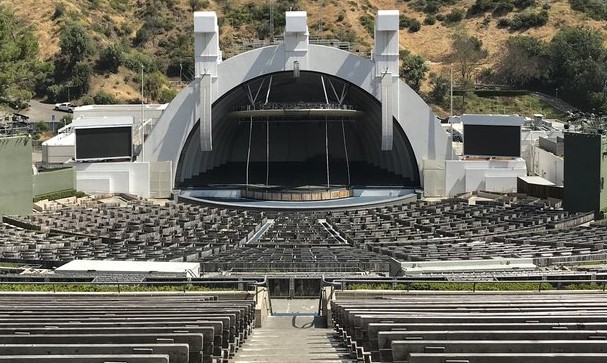 Two final Beatles recording sessions involving "I Wanna Be Your Man" took place during the group's Hollywood Bowl performances in August of 1965. Neither their August 29th, 1965 show (produced by Karl Engemann and engineered by Hugh Davies) nor their August 30th, 1965 show (produced by Voyle Gilmore and engineered by Pete Abbott) were deemed worthy to be included on either of the official Beatles Hollywood Bowl releases. Two final Beatles recording sessions involving "I Wanna Be Your Man" took place during the group's Hollywood Bowl performances in August of 1965. Neither their August 29th, 1965 show (produced by Karl Engemann and engineered by Hugh Davies) nor their August 30th, 1965 show (produced by Voyle Gilmore and engineered by Pete Abbott) were deemed worthy to be included on either of the official Beatles Hollywood Bowl releases.
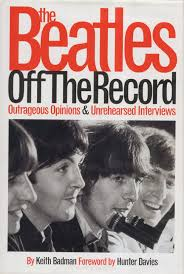 Interestingly, their final live performance on August 29th, 1966 at Candlestick Park included "I Wanna Be Your Man," introduced by Paul as a "special request for the wonderful backroom boys on this tour." As detailed in Keith Badman's book "The Beatles Off The Record," the group's press officer Tony Barrow recalls: "There was a sort of end of term spirit thing going on, and there was also this kind of feeling amongst all of us around The Beatles, that this might just be the last concert that they will ever do. I remember Paul, casually, at the very last minute, saying, 'Have you got your cassette recorder with you?' and I said, 'Yes, of course.' Paul then said, 'Tape it, will you? Tape the show,' which I did, literally just holding the microphone up in the middle of the field. As a personal souvenir of the occasion, it was a very nice thing to have." Even though Tony Barrow insists that he only made one copy of the tape, which he had locked in a drawer in his London office, and gave the original to Paul, this recording has been available on bootleg releases throughout the years. Interestingly, their final live performance on August 29th, 1966 at Candlestick Park included "I Wanna Be Your Man," introduced by Paul as a "special request for the wonderful backroom boys on this tour." As detailed in Keith Badman's book "The Beatles Off The Record," the group's press officer Tony Barrow recalls: "There was a sort of end of term spirit thing going on, and there was also this kind of feeling amongst all of us around The Beatles, that this might just be the last concert that they will ever do. I remember Paul, casually, at the very last minute, saying, 'Have you got your cassette recorder with you?' and I said, 'Yes, of course.' Paul then said, 'Tape it, will you? Tape the show,' which I did, literally just holding the microphone up in the middle of the field. As a personal souvenir of the occasion, it was a very nice thing to have." Even though Tony Barrow insists that he only made one copy of the tape, which he had locked in a drawer in his London office, and gave the original to Paul, this recording has been available on bootleg releases throughout the years.
Song Structure and Style
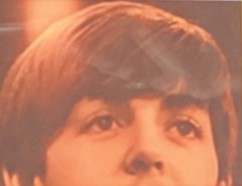 We see here another example of Lennon and McCartney utilizing a chorus in a song, which wasn’t done to a great degree this early in their career. The song consists of a 'verse/ chorus/ verse/ chorus' format (or abab). After the second chorus, an instrumental section is added before another verse and chorus are heard. We see here another example of Lennon and McCartney utilizing a chorus in a song, which wasn’t done to a great degree this early in their career. The song consists of a 'verse/ chorus/ verse/ chorus' format (or abab). After the second chorus, an instrumental section is added before another verse and chorus are heard.
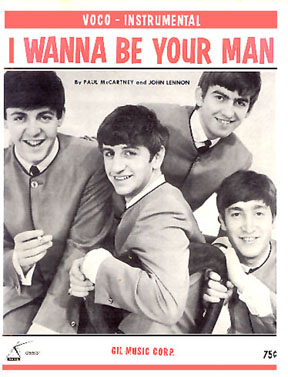 The intro shouldn't be viewed as a separate section of the song as it consists of only a simple but rousing lead guitar flourish from George Harrison. We then jump headlong into the first verse, this being performed in a bluesy style and sung solo by Ringo himself. The verse encompasses an odd 17 measures, but is actually very symmetrical in that the verse consists of two identical eight measure sections with another measure thrown in to give Ringo time to take a breath before the chorus begins. The entire verse is played on the E major chord without any changes whatsoever, with the exception of the hint of a B chord in the seventh and fifteenth measure. The odd seventeenth measure actually consists of the customary Beatles ‘break’ with the beginning of the chorus being sung a cappella. The intro shouldn't be viewed as a separate section of the song as it consists of only a simple but rousing lead guitar flourish from George Harrison. We then jump headlong into the first verse, this being performed in a bluesy style and sung solo by Ringo himself. The verse encompasses an odd 17 measures, but is actually very symmetrical in that the verse consists of two identical eight measure sections with another measure thrown in to give Ringo time to take a breath before the chorus begins. The entire verse is played on the E major chord without any changes whatsoever, with the exception of the hint of a B chord in the seventh and fifteenth measure. The odd seventeenth measure actually consists of the customary Beatles ‘break’ with the beginning of the chorus being sung a cappella.
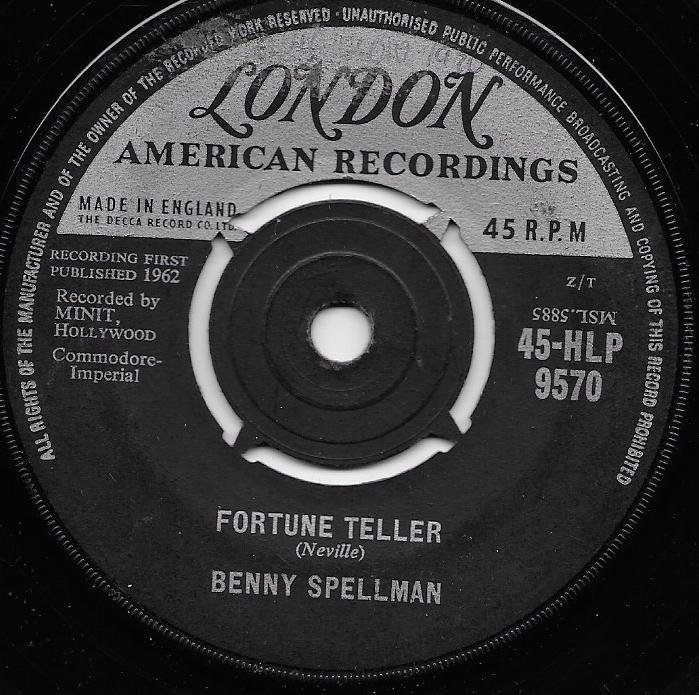 The eight measure chorus, which lyrically only consists of the title of the song sung four times, brings in some pedestrian but effective chord changes which contrast nicely with the single chord verse. The chorus shows both John and Paul harmonizing with Ringo, although this should actually be termed "overpowering" him since we can almost not hear Ringo at all in the choruses. The seventh measure of the chorus displays the “Fortune Teller” downturned final note. The eight measure chorus, which lyrically only consists of the title of the song sung four times, brings in some pedestrian but effective chord changes which contrast nicely with the single chord verse. The chorus shows both John and Paul harmonizing with Ringo, although this should actually be termed "overpowering" him since we can almost not hear Ringo at all in the choruses. The seventh measure of the chorus displays the “Fortune Teller” downturned final note.
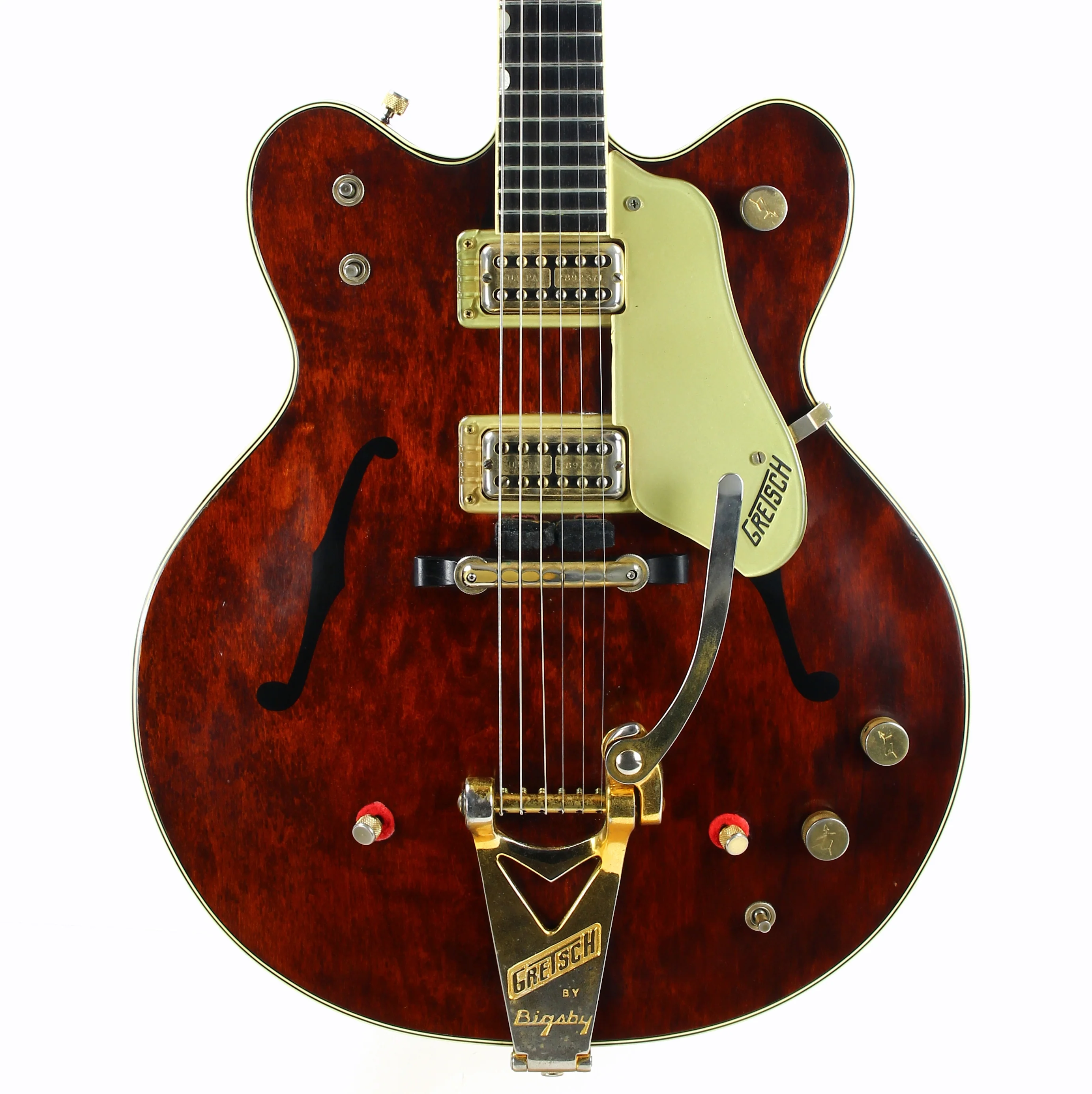 After the second verse and an identical repeat of the chorus, we enter into a guitar solo section featuring Harrison’s simple but energetic guitar riffs. This solo performance is all but overshadowed by Paul and John’s shouting and carrying-on. The solo section is 12-measure-long and centers only on the E major chord, making it unlike either the verse or chorus of the song. This part of the song appears to be aimless vamping which ends somewhat embarrassingly with muffled talking as it segues to a rough edit into another performance of the first verse. After the second verse and an identical repeat of the chorus, we enter into a guitar solo section featuring Harrison’s simple but energetic guitar riffs. This solo performance is all but overshadowed by Paul and John’s shouting and carrying-on. The solo section is 12-measure-long and centers only on the E major chord, making it unlike either the verse or chorus of the song. This part of the song appears to be aimless vamping which ends somewhat embarrassingly with muffled talking as it segues to a rough edit into another performance of the first verse.
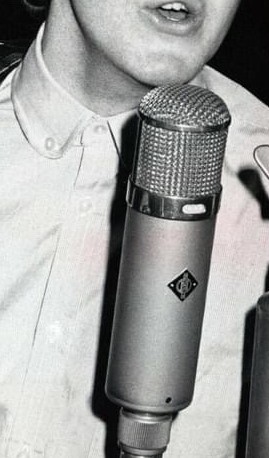 After another chorus is heard, the group rides out the rest of the song on E major similar to the solo section of the song, but this time with the title of the song being repeated with a similar melody line as the chorus. As the song fades, we hear exuberant shouting and barking (?!?) from Paul and John. All in all, rock ‘n’ roll "energy" is the name of the game here, and it is done very well. After another chorus is heard, the group rides out the rest of the song on E major similar to the solo section of the song, but this time with the title of the song being repeated with a similar melody line as the chorus. As the song fades, we hear exuberant shouting and barking (?!?) from Paul and John. All in all, rock ‘n’ roll "energy" is the name of the game here, and it is done very well.
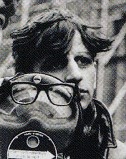 Lyrically, though, there isn’t much to tell. In a nutshell, it appears that the singer wants to be someone’s “man.” His qualifications for this proposed job is that he can love the girl in question “like no other baby.” Unfortunately, the song goes unresolved because we never find out if he did indeed achieve his goal. One can only hope for Ringo to release a follow-up, hopefully titled “I Got To Be Her Man!” Lyrically, though, there isn’t much to tell. In a nutshell, it appears that the singer wants to be someone’s “man.” His qualifications for this proposed job is that he can love the girl in question “like no other baby.” Unfortunately, the song goes unresolved because we never find out if he did indeed achieve his goal. One can only hope for Ringo to release a follow-up, hopefully titled “I Got To Be Her Man!”
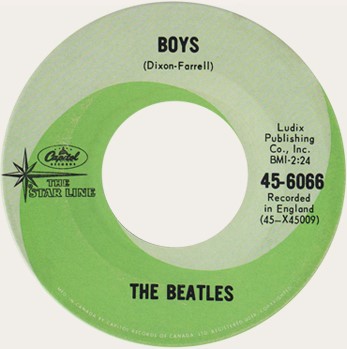 All kidding aside, the obvious thrust to this song is not in its lyrics, as McCartney relates, “we were in love with the sound, the music. We often used to say to the people, the words don’t really matter, people don’t listen to words, it's the sound they listen to. So ‘I Wanna Be Your Man’ was to try and give Ringo something like ‘Boys.’” The bluesy, free-spirited, high energy, rock ‘n’ roll feel to the song fit perfectly with the image The Beatles wanted to portray to American audiences, and therefore fit perfectly on their first Capitol album "Meet The Beatles." All kidding aside, the obvious thrust to this song is not in its lyrics, as McCartney relates, “we were in love with the sound, the music. We often used to say to the people, the words don’t really matter, people don’t listen to words, it's the sound they listen to. So ‘I Wanna Be Your Man’ was to try and give Ringo something like ‘Boys.’” The bluesy, free-spirited, high energy, rock ‘n’ roll feel to the song fit perfectly with the image The Beatles wanted to portray to American audiences, and therefore fit perfectly on their first Capitol album "Meet The Beatles."
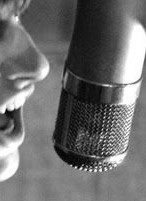 Performance-wise, Ringo fit the bill perfectly as vocalist on this song. Although it was written with a specific limited range for the vocalist, and Ringo did stray off-key at times, this was a great vehicle for him to perform live, which was the intent of the song. "Ringo wasn't the best vocalist in the group," Paul relates in his book "The Lyrics," "but there's no doubt he could hold a song...(this one was) pretty basic, but it was a cool enough little song, and Ringo did it really well." Subsequently, his vocal work appeared to improve noticeably during its performance life as he grew more accustomed to it. He even added different embellishments, as noted on both the “Live At The BBC” and “Anthology 1” albums. Ringo’s drum work is an excellent example of the "beat" style they spearheaded during the group's Cavern / Hamburg days, complete with the idiosyncrasies in his drum fills at the end of each verse. Performance-wise, Ringo fit the bill perfectly as vocalist on this song. Although it was written with a specific limited range for the vocalist, and Ringo did stray off-key at times, this was a great vehicle for him to perform live, which was the intent of the song. "Ringo wasn't the best vocalist in the group," Paul relates in his book "The Lyrics," "but there's no doubt he could hold a song...(this one was) pretty basic, but it was a cool enough little song, and Ringo did it really well." Subsequently, his vocal work appeared to improve noticeably during its performance life as he grew more accustomed to it. He even added different embellishments, as noted on both the “Live At The BBC” and “Anthology 1” albums. Ringo’s drum work is an excellent example of the "beat" style they spearheaded during the group's Cavern / Hamburg days, complete with the idiosyncrasies in his drum fills at the end of each verse.
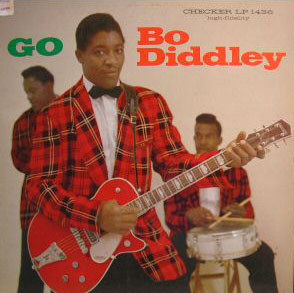 Harrison can next be mentioned for his stunning guitar licks heard throughout the song, as well as the subtle phrases played during the solo. The chromatic scale guitar riffs heard in the chorus add a distinctive contrast to the bluesy tone on display in the verses. Lennon accentuates the Bo Diddley concept by adding tremolo to his rhythm guitar throughout. It appears that John is actually singing the lead vocals during the chorus, which fits the criteria of their usual habit of singing lead on whatever they predominantly wrote. Harrison can next be mentioned for his stunning guitar licks heard throughout the song, as well as the subtle phrases played during the solo. The chromatic scale guitar riffs heard in the chorus add a distinctive contrast to the bluesy tone on display in the verses. Lennon accentuates the Bo Diddley concept by adding tremolo to his rhythm guitar throughout. It appears that John is actually singing the lead vocals during the chorus, which fits the criteria of their usual habit of singing lead on whatever they predominantly wrote.
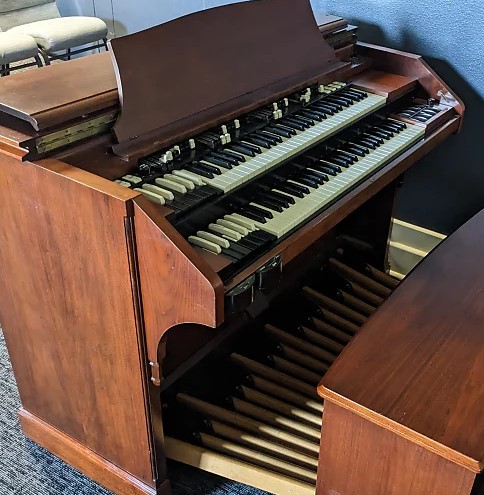 McCartney’s bass work is pedestrian compared to what we’ve seen otherwise up to this point, but fits well with the feel of the song. Since the song was recorded very shortly after it was composed, Paul simply could have felt this was good enough for a “throwaway” song. Paul’s harmonies are of his usual high quality, while his excited wails and barks come across as a little much (or as comic relief). George Martin’s Hammond organ work (or John's), while a semi-essential ingredient to the mix, is more felt than heard with the exception of his flourishes at the end of each chorus. McCartney’s bass work is pedestrian compared to what we’ve seen otherwise up to this point, but fits well with the feel of the song. Since the song was recorded very shortly after it was composed, Paul simply could have felt this was good enough for a “throwaway” song. Paul’s harmonies are of his usual high quality, while his excited wails and barks come across as a little much (or as comic relief). George Martin’s Hammond organ work (or John's), while a semi-essential ingredient to the mix, is more felt than heard with the exception of his flourishes at the end of each chorus.
 Capitol's "Meet The Beatles" album
|
American Releases
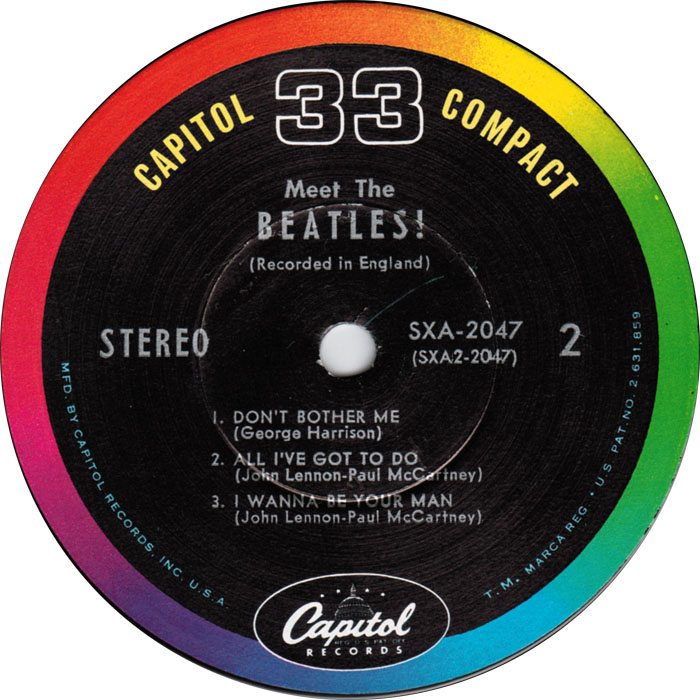 January 20th, 1964, was the first US release of “I Wanna Be Your Man” on the Capitol “Meet The Beatles!” album. Incidentally, the mono version of this album contained a "Type B" foldover mix of the song created by Capitol that combined both channels of the stereo mix into one instead of the legitimate mono mix originally created by George Martin. This album was finally released on an individual compact disc on January 21st, 2014, both the mono and stereo mixes being contained on a single CD. A mono edition of the album on opaque blue vinyl was then released on November 22nd, 2024 for sale exclusively at Target stores. The second official release was also in January of 1964, on the Capitol Compact 33 Disc for “Meet The Beatles!” intended primarily for jukebox play. The song was the third and last on side two of this disc, which was not intended for sale. January 20th, 1964, was the first US release of “I Wanna Be Your Man” on the Capitol “Meet The Beatles!” album. Incidentally, the mono version of this album contained a "Type B" foldover mix of the song created by Capitol that combined both channels of the stereo mix into one instead of the legitimate mono mix originally created by George Martin. This album was finally released on an individual compact disc on January 21st, 2014, both the mono and stereo mixes being contained on a single CD. A mono edition of the album on opaque blue vinyl was then released on November 22nd, 2024 for sale exclusively at Target stores. The second official release was also in January of 1964, on the Capitol Compact 33 Disc for “Meet The Beatles!” intended primarily for jukebox play. The song was the third and last on side two of this disc, which was not intended for sale.
Although the song made an appearance in the movie “A Hard Day’s Night,” it did not appear on the soundtrack album due to its already having been released on another album.
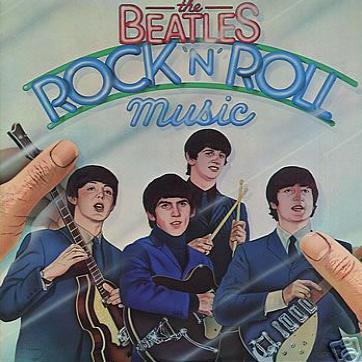 The song was noteworthy enough to warrant its inclusion on the compilation album “Rock ‘n’ Roll Music,” which was a double album that was released on June 7th, 1976, during a revival of Beatles popularity. George Martin was consulted regarding the preparation of this album and, with access to only the old Capitol mixes, made some noteworthy adjustments. While the original stereo mix has all instruments on the left channel and all vocals on the right, George Martin decided to center the instruments between both channels and put the vocals slightly to the left channel, boosting the bass frequencies in the right channel and lifting the treble in the left channel to create a stereo effect. Later, on October 27th, 1980, this double album was divided by Capitol into two budget single albums and re-released individually, “Rock ‘n’ Roll Music, Vol. 1” containing "I Wanna Be Your Man." The song was noteworthy enough to warrant its inclusion on the compilation album “Rock ‘n’ Roll Music,” which was a double album that was released on June 7th, 1976, during a revival of Beatles popularity. George Martin was consulted regarding the preparation of this album and, with access to only the old Capitol mixes, made some noteworthy adjustments. While the original stereo mix has all instruments on the left channel and all vocals on the right, George Martin decided to center the instruments between both channels and put the vocals slightly to the left channel, boosting the bass frequencies in the right channel and lifting the treble in the left channel to create a stereo effect. Later, on October 27th, 1980, this double album was divided by Capitol into two budget single albums and re-released individually, “Rock ‘n’ Roll Music, Vol. 1” containing "I Wanna Be Your Man."
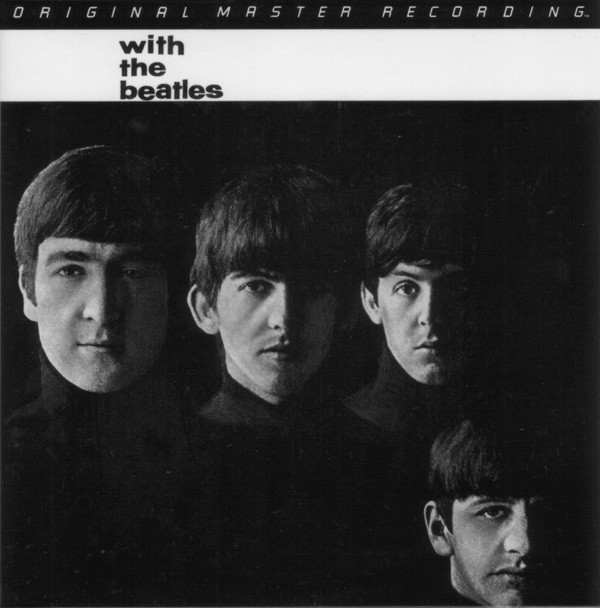 The first time the original British "With The Beatles" album was made available in the US was the "Original Master Recording" vinyl edition released through Mobile Fidelity Sound Lab in January of 1987. This was the first release of the official mono version of "I Wanna Be Your Man" in America and was prepared utilizing half-speed mastering technology from the original master tape on loan from EMI. This title had a limited production, reportedly because of a damaged metal part that was needed for pressing the vinyl. Therefore, this album is said to be the rarest and most valuable Beatles album in the “Original Master Recording” series. The first time the original British "With The Beatles" album was made available in the US was the "Original Master Recording" vinyl edition released through Mobile Fidelity Sound Lab in January of 1987. This was the first release of the official mono version of "I Wanna Be Your Man" in America and was prepared utilizing half-speed mastering technology from the original master tape on loan from EMI. This title had a limited production, reportedly because of a damaged metal part that was needed for pressing the vinyl. Therefore, this album is said to be the rarest and most valuable Beatles album in the “Original Master Recording” series.
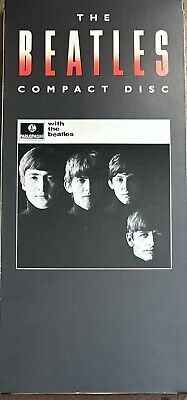 February 26th, 1987 saw the CD release of the original British "With The Beatles" album in the US, which included "I Wanna Be Your Man." A vinyl edition of this album was released in the US on July 21st, 1987. While this was only released in mono at first, the September 9th, 2009 remastered CD version was released in stereo, as was the vinyl edition that came out on November 13th, 2012. February 26th, 1987 saw the CD release of the original British "With The Beatles" album in the US, which included "I Wanna Be Your Man." A vinyl edition of this album was released in the US on July 21st, 1987. While this was only released in mono at first, the September 9th, 2009 remastered CD version was released in stereo, as was the vinyl edition that came out on November 13th, 2012.
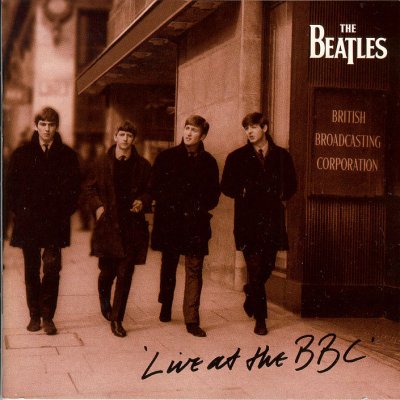 The next release of the song didn’t occur until December 6th, 1994 with the “Live At The BBC” album. The version on this release was recorded for the BBC on February 28th and aired on the radio on March 30th on the “From Us To You” show. The version differs quite dramatically from the recorded version on “Meet The Beatles!” due to them getting more comfortable with the song. They take a few liberties with the arrangement, such as adding a full four bar introduction, changing both the solo and closing sections of the song to a standard 12-bar-blues chord pattern, and Ringo accentuating his vocals differently. Also gone are the Bo Diddley-esque vibrato on John’s rhythm guitar as well as the Hammond organ part originally played by George Martin. On November 11th, 2013, this album was remastered, re-packaged and re-released. The next release of the song didn’t occur until December 6th, 1994 with the “Live At The BBC” album. The version on this release was recorded for the BBC on February 28th and aired on the radio on March 30th on the “From Us To You” show. The version differs quite dramatically from the recorded version on “Meet The Beatles!” due to them getting more comfortable with the song. They take a few liberties with the arrangement, such as adding a full four bar introduction, changing both the solo and closing sections of the song to a standard 12-bar-blues chord pattern, and Ringo accentuating his vocals differently. Also gone are the Bo Diddley-esque vibrato on John’s rhythm guitar as well as the Hammond organ part originally played by George Martin. On November 11th, 2013, this album was remastered, re-packaged and re-released.
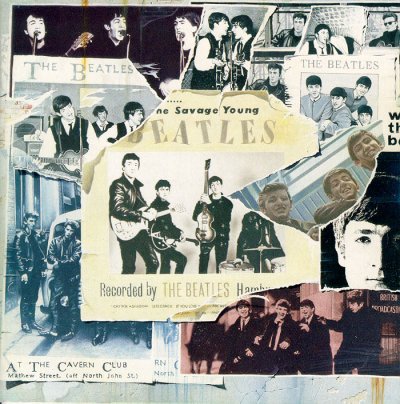 Almost a year later, the next release of the song occurred on November 21st, 1995 on the Apple album “Anthology 1.” This version was the one recorded on April 19th, 1964 at IBC Studios, London, for the BBC television special “Around The Beatles.” A striking difference in this version is the total elimination of the final verse, which they may have decided to cut in order to shorten the length of the song for the television special. Almost a year later, the next release of the song occurred on November 21st, 1995 on the Apple album “Anthology 1.” This version was the one recorded on April 19th, 1964 at IBC Studios, London, for the BBC television special “Around The Beatles.” A striking difference in this version is the total elimination of the final verse, which they may have decided to cut in order to shorten the length of the song for the television special.
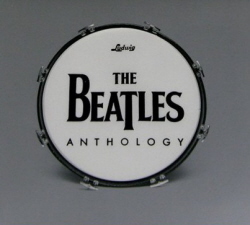 Just prior to the above release, a sampler disc was distributed to US radio stations that included the same version of "I Wanna Be Your Man." Since not many copies of this disc were made, this CD is quite rare. Just prior to the above release, a sampler disc was distributed to US radio stations that included the same version of "I Wanna Be Your Man." Since not many copies of this disc were made, this CD is quite rare.
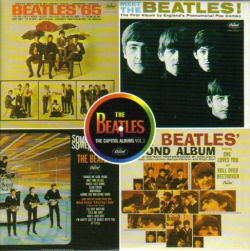 November 15th, 2004 saw the release of the box set “The Capitol Albums, Vol. 1,” which featured the song in stereo and "Type B" foldover mono as heard on the original "Meet The Beatles!" album. A promotional CD sampler of this set was also put out just prior to this release, which included both the stereo and mono versions of "I Wanna Be Your Man." November 15th, 2004 saw the release of the box set “The Capitol Albums, Vol. 1,” which featured the song in stereo and "Type B" foldover mono as heard on the original "Meet The Beatles!" album. A promotional CD sampler of this set was also put out just prior to this release, which included both the stereo and mono versions of "I Wanna Be Your Man."
 On September 9th, 2009, the CD box set “The Beatles In Mono” was released, which included the newly remastered mono version of "I Wanna Be Your Man." The vinyl edition of this box set was first released on September 9th, 2014. On September 9th, 2009, the CD box set “The Beatles In Mono” was released, which included the newly remastered mono version of "I Wanna Be Your Man." The vinyl edition of this box set was first released on September 9th, 2014.
Also released on September 9th, 2009, in promotion of the remastered Beatles catalog, the "09.09.09 Sampler" was distributed to retailers and radio programmers, "I Wanna Be Your Man" being featured therein. This has become quite the find for collectors.”
Paul McCartney released a version of the song on November 15th, 1993 on his live album "Paul Is Live", which was improvised at a soundcheck sometime during his "New World Tour" of 1993.
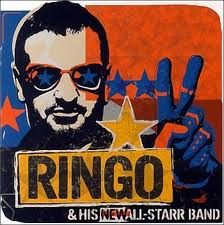 Ringo has taken advantage of this song with his All-Starr Band throughout most of their career. Six of their live albums included the song: "Ringo Starr and his third All-Starr Band, Volume 1" (released August 12th, 1997), "King Bisciut Flower Hour Presents Ringo and his New All-Starr Band" (released August 6th, 2002), "Tour 2003" (March 23rd, 2004), "Ringo Starr and Friends" (released August 15th, 2006), "Ringo Starr & His All-Starr Band Live 2006" (released July 7th, 2008) and "Live At The Greek Theatre 2008" (released July 27th, 2010). The song was also included in the 2CD set "Live At The Greek Theatre 2019," which was released on November 25th, 2022, this also being released on on 2CD/Blu-Ray set that same day. Ringo has taken advantage of this song with his All-Starr Band throughout most of their career. Six of their live albums included the song: "Ringo Starr and his third All-Starr Band, Volume 1" (released August 12th, 1997), "King Bisciut Flower Hour Presents Ringo and his New All-Starr Band" (released August 6th, 2002), "Tour 2003" (March 23rd, 2004), "Ringo Starr and Friends" (released August 15th, 2006), "Ringo Starr & His All-Starr Band Live 2006" (released July 7th, 2008) and "Live At The Greek Theatre 2008" (released July 27th, 2010). The song was also included in the 2CD set "Live At The Greek Theatre 2019," which was released on November 25th, 2022, this also being released on on 2CD/Blu-Ray set that same day.
Live Performances
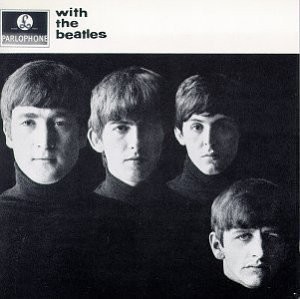 Having finally given Ringo a song other than “Boys” to sing, The Beatles were quick to opt for this change. The British album “With The Beatles,” which features “I Wanna Be Your Man,” was released there on November 22nd, 1963, and the group starting performing the song on December 24th, 1963, during their London stage production “The Beatles’ Christmas Show,” which ran non-stop until January 11th, 1964. Having finally given Ringo a song other than “Boys” to sing, The Beatles were quick to opt for this change. The British album “With The Beatles,” which features “I Wanna Be Your Man,” was released there on November 22nd, 1963, and the group starting performing the song on December 24th, 1963, during their London stage production “The Beatles’ Christmas Show,” which ran non-stop until January 11th, 1964.
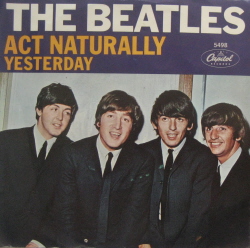 Ringo then began to alternate his vocal spot during 1964, performing the song “Boys” while in Paris during January and early February, but returning to “I Wanna Be Your Man” during their brief American concert tour in February. After switching back to “Boys” during the entire world tour of 1964, and briefly adding new Ringo songs “Honey Don’t” and “Act Naturally” to their set list, he returned to “I Wanna Be Your Man” periodically during the 1965 world tour, such as at the Hollywood Bowl on August 30th of that year. The Beatles then finished off their performance history in 1966 by including the three-year-old song in their set list, the oldest Lennon / McCartney composition performed at these shows, including their final paid concert performance at Candlestick Park, San Francisco, on August 29th, 1966. Ringo then began to alternate his vocal spot during 1964, performing the song “Boys” while in Paris during January and early February, but returning to “I Wanna Be Your Man” during their brief American concert tour in February. After switching back to “Boys” during the entire world tour of 1964, and briefly adding new Ringo songs “Honey Don’t” and “Act Naturally” to their set list, he returned to “I Wanna Be Your Man” periodically during the 1965 world tour, such as at the Hollywood Bowl on August 30th of that year. The Beatles then finished off their performance history in 1966 by including the three-year-old song in their set list, the oldest Lennon / McCartney composition performed at these shows, including their final paid concert performance at Candlestick Park, San Francisco, on August 29th, 1966.
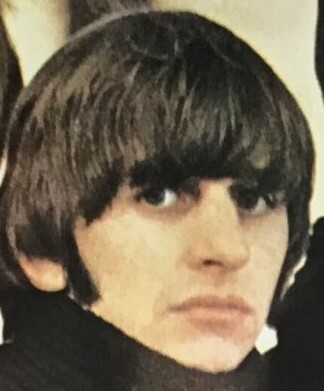 It has become apparent that the group had a very relaxed attitude toward the song in their live shows. Not only was it extremely easy to play, it was a "no brainer" for Ringo to remember the song's simple lyrics. With their "who cares" philosophy during their last year of touring, Ringo tended to lyrically repeat the first verse throughout the whole song, forgetting that there actually was a different second verse. Nobody thought to correct the matter. It has become apparent that the group had a very relaxed attitude toward the song in their live shows. Not only was it extremely easy to play, it was a "no brainer" for Ringo to remember the song's simple lyrics. With their "who cares" philosophy during their last year of touring, Ringo tended to lyrically repeat the first verse throughout the whole song, forgetting that there actually was a different second verse. Nobody thought to correct the matter.
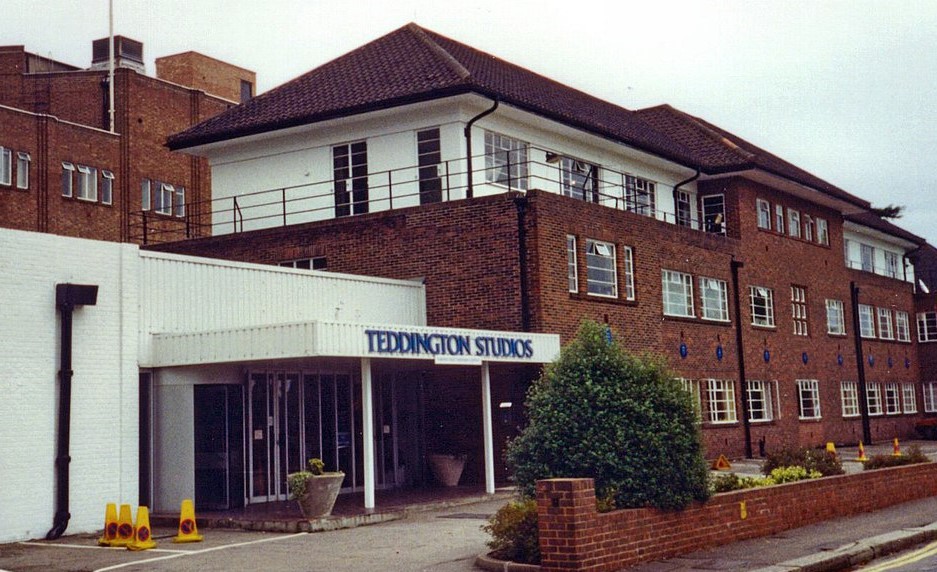 There were three TV performances of the song as well, the first being on February 23rd, 1963 on the British show "Big Night Out," which was a mimed performance at the Teddington Studio Centre of ABC Television that was broadcast on February 29th of that year, then the British TV special "Around The Beatles," which first aired on May 6th, 1964, and finally, a live performance in Paris on June 20th, 1964 was broadcast on a French TV show entitled "Les Beatles" on October 31st of that year. There were three TV performances of the song as well, the first being on February 23rd, 1963 on the British show "Big Night Out," which was a mimed performance at the Teddington Studio Centre of ABC Television that was broadcast on February 29th of that year, then the British TV special "Around The Beatles," which first aired on May 6th, 1964, and finally, a live performance in Paris on June 20th, 1964 was broadcast on a French TV show entitled "Les Beatles" on October 31st of that year.
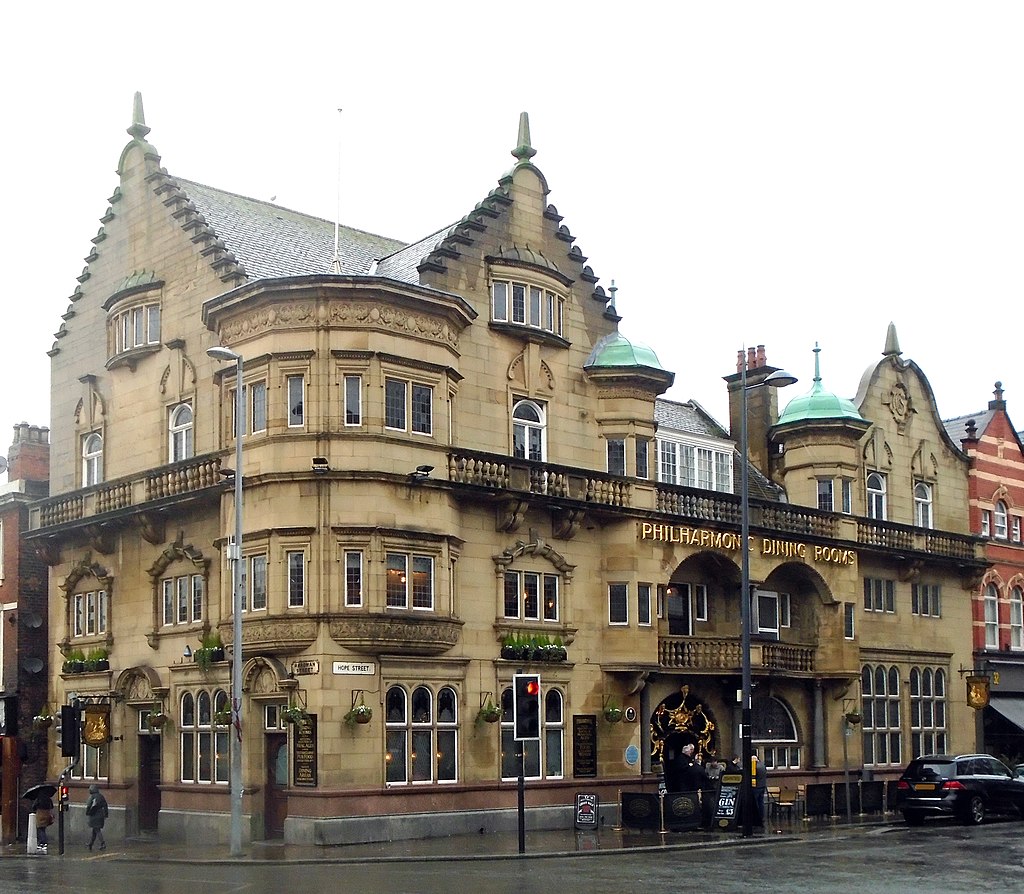 Interestingly, McCartney and his band worked up a bluesy / jazzy version of the song which they would play during soundchecks before gigs on their 1993 "New World Tour," although the band never performed it during their actual shows on this tour. Paul did, however, decide to feature "I Wanna Be Your Man" in its original arrangement during the 2017 leg of his "One On One" tour, this leg spanning from April 25th (Tokyo, Japan) to December 16th (Aukland, New Zealand). Also, on June 9th, 2018, Paul and his band played the song at the Philharmonic Pub in Liverpool for a special segment of "The Late Late Show With James Corden," a truncated version of this performance appearing on an hour-long CBS prime-time special entitled "When Corben Met McCartney, Live From Liverpool," which aired on August 20th of that year. Interestingly, McCartney and his band worked up a bluesy / jazzy version of the song which they would play during soundchecks before gigs on their 1993 "New World Tour," although the band never performed it during their actual shows on this tour. Paul did, however, decide to feature "I Wanna Be Your Man" in its original arrangement during the 2017 leg of his "One On One" tour, this leg spanning from April 25th (Tokyo, Japan) to December 16th (Aukland, New Zealand). Also, on June 9th, 2018, Paul and his band played the song at the Philharmonic Pub in Liverpool for a special segment of "The Late Late Show With James Corden," a truncated version of this performance appearing on an hour-long CBS prime-time special entitled "When Corben Met McCartney, Live From Liverpool," which aired on August 20th of that year.
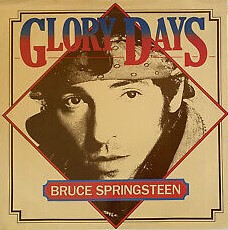 Another noteworthy performance of the song by Paul took place on June 16th, 2022 at the MetLife Stadium in New Jersey during his "Got Back" tour. Bruce Springsteen joined McCartney on stage to perform his big hit "Glory Days" as well as "I Wanna Be Your Man," then returning to the stage to play guitar on the final song of the show, the Abbey Road classic "The End." Another noteworthy performance of the song by Paul took place on June 16th, 2022 at the MetLife Stadium in New Jersey during his "Got Back" tour. Bruce Springsteen joined McCartney on stage to perform his big hit "Glory Days" as well as "I Wanna Be Your Man," then returning to the stage to play guitar on the final song of the show, the Abbey Road classic "The End."
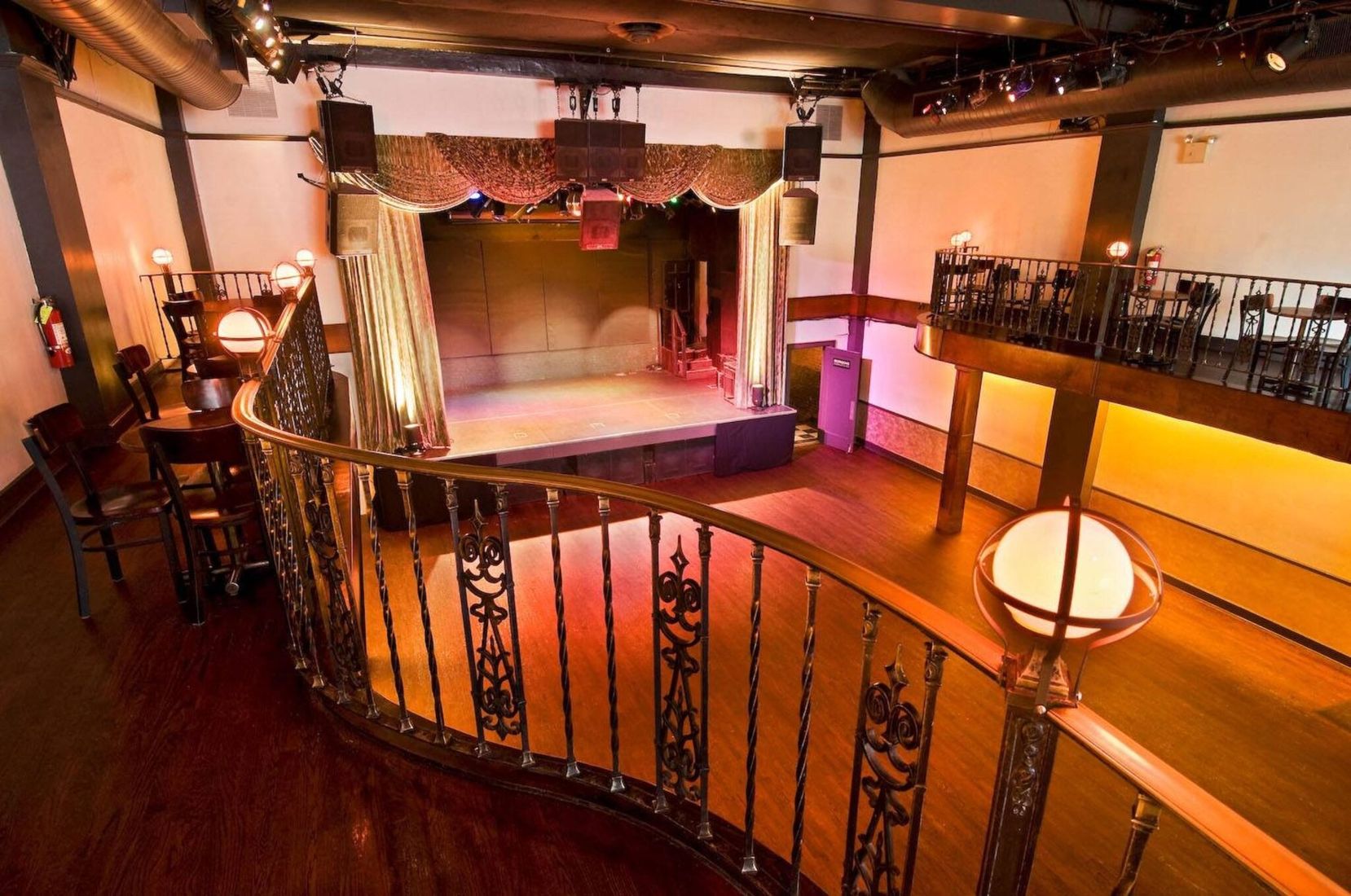 Interestingly, Paul and his group played a surprise three night residency at the Bowery Ballroom in New York City on February 11th, 12th and 14th, 2025, this final night being Valentine's Day. They played "I Wanna Be Your Man" at each of these performances at this quaint 575-capacity venue in Manhattan. Interestingly, Paul and his group played a surprise three night residency at the Bowery Ballroom in New York City on February 11th, 12th and 14th, 2025, this final night being Valentine's Day. They played "I Wanna Be Your Man" at each of these performances at this quaint 575-capacity venue in Manhattan.
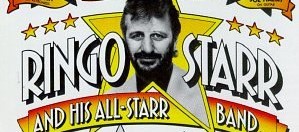 Ringo also took good advantage of performing the song with his All-Starr Band throughout the years, wisely choosing to sing the song in a lower key, which suited his voice more comfortably than it had throughout his Beatles career. He has performed "I Wanna Be Your Man" in every tour, his 1992 set list being the only exception. Notable Ringo performances of the song was on the hilarious January 31st, 2012 episode of "The Late Late Show with Craig Ferguson" on CBS, as well as an all-star jam of the song at the conclusion of his induction into the Rock And Roll Hall Of Fame in Cleveland's Public Hall on April 19th, 2015. Ringo also took good advantage of performing the song with his All-Starr Band throughout the years, wisely choosing to sing the song in a lower key, which suited his voice more comfortably than it had throughout his Beatles career. He has performed "I Wanna Be Your Man" in every tour, his 1992 set list being the only exception. Notable Ringo performances of the song was on the hilarious January 31st, 2012 episode of "The Late Late Show with Craig Ferguson" on CBS, as well as an all-star jam of the song at the conclusion of his induction into the Rock And Roll Hall Of Fame in Cleveland's Public Hall on April 19th, 2015.
Conclusion
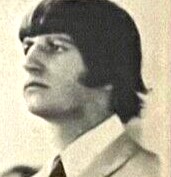 So started the pattern of allowing Ringo to have one song on each Beatles album. Although this pattern was not strictly adhered to throughout The Beatles' career, it did leave behind a small legacy of songs for Ringo to claim as his own. Although The Rolling Stones were the ones to achieve British chart success with the song, because of the nearly three years of performance history, “I Wanna Be Your Man” will always be affectionately known as a Beatles song, and more appropriately, as a Ringo song. So started the pattern of allowing Ringo to have one song on each Beatles album. Although this pattern was not strictly adhered to throughout The Beatles' career, it did leave behind a small legacy of songs for Ringo to claim as his own. Although The Rolling Stones were the ones to achieve British chart success with the song, because of the nearly three years of performance history, “I Wanna Be Your Man” will always be affectionately known as a Beatles song, and more appropriately, as a Ringo song.
Song Summary
“I Wanna Be Your Man”
Written by: John Lennon / Paul McCartney
- Song Written: September 1963
- Song Recorded: September 12& 30, October 3& 23, 1963
- First US Release Date: January 20, 1964
- First US Album Release: Capitol #ST-2047 “Meet The Beatles!”
- US Single Release: Capitol #SXA 2047 (Meet The Beatles Jukebox EP)
- Highest Chart Position: n/a
- British Album Release: Parlophone #PCS 3045 “With The Beatles”
- Length: 1:58
- Key: E7
- Producer: George Martin
- Engineers: Norman Smith, Richard Langham
Instrumentation (most likely):
- Ringo Starr – Lead Vocals, Drums (1963 Ludwig Downbeat Black Oyster Pearl), maracas, tambourine
- George Harrison – Lead Guitar (1962 Gretsch 6122 Country Gentleman)
- John Lennon – Rhythm Guitar (1958 Rickenbacker 325), Background Vocals (Lead Vocals in Chorus)
- Paul McCartney - Bass Guitar (1961 Hofner 500/1), Background Vocals
- George Martin - Organ (Hammond RT-3)
Written and compiled by David Rybaczewski
|
IF YOU WOULD LIKE TO MAKE A DONATION TO KEEP THIS WEBSITE UP AND RUNNING, PLEASE CLICK BELOW!
Sign Up Below for our MONTHLY BEATLES TRIVIA QUIZ!
|